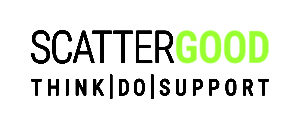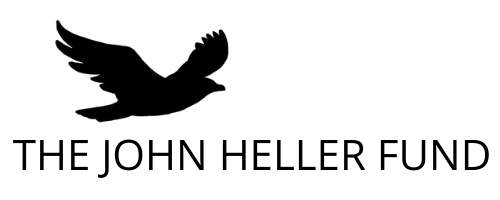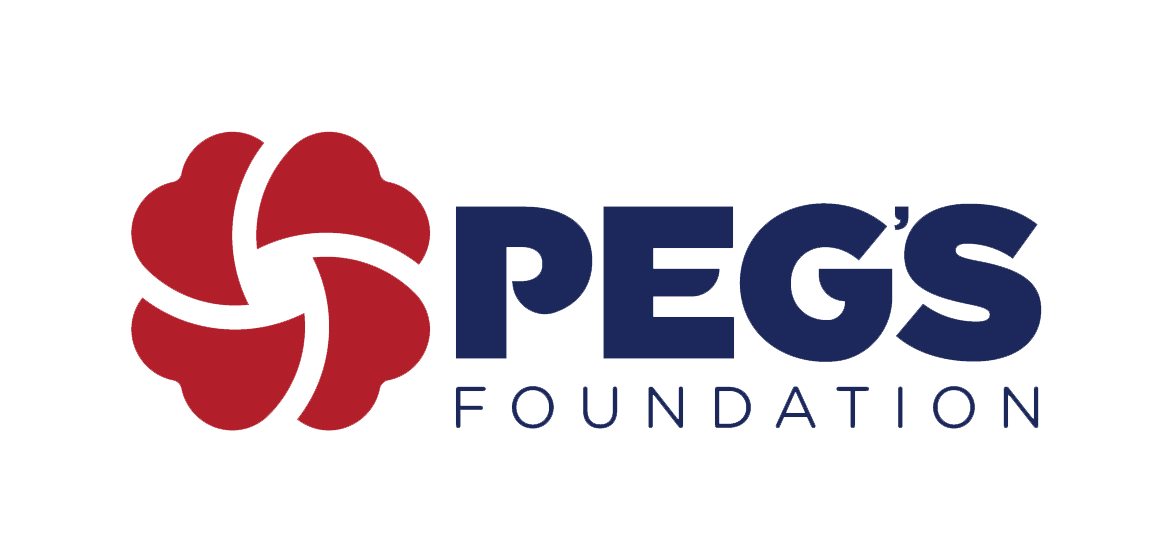Below are some quick answers to some of the questions addressed in Health in Mind. You can learn more about this project, including authors, methodology, and acknowledgements, on our About This Project page.
About Mental Health and Addiction
Q: What is mental health?
A: Mental health is a state of well-being in which individual potential is realized. When an individual is experiencing positive mental health, they can ably cope with normal life stressors, work productively, and contribute to the community
Q: What is a mental health disorder?
A: A mental health disorder is one of a wide range of conditions that affect mood, thinking and behavior.
Q: What is addiction?
A: Addiction is a chronic, relapsing disorder manifested by compulsive substance use despite harmful consequences, due to long-lasting changes in the brain. It is considered both a complex brain disease and a mental illness. While addiction can refer to compulsive engagement in other activities, we refer to the term here only in regards to the use of substances.
Q: What is a substance use disorder?
A: Substance use disorders involve the recurrent use of alcohol and/or drugs causing clinically significant impairment, including health problems, disability, and failure to meet major responsibilities.
Q: What evidence exists to suggest mental health disorders and addiction are a significant public health issue?
A: In a lifetime, one in five people experience a mental health disorder and one in ten experience addiction. Rates of death due to suicide for 10- to 34-year olds have risen, and suicide is now second only to unintentional injury among causes of death for young people. More than 702,000 people have died from an opioid-related overdose since 1999, at a rate that has been growing steadily each year.
Mental health disorders and addiction are responsible for $201 billion in healthcare costs, reduced workforce productivity, over-taxed social services, and an estimated additional $193.2 billion in lost earnings each year.
Q: Why are we particular about the language we use when referring to mental health disorders and addiction?
A: Many terms are used interchangeably when discussing mental health disorders and addiction. But some terms carry stigma which can prevent people from seeking or receiving appropriate care. For a full glossary and information on the link between language and stigma, visit our glossary of terms
Q: What are social determinants of health and why do they matter for mental health?
A: Social determinants are everything outside of a clinical care setting that impact health. These conditions are present where people live, learn, work, and play, such as socioeconomic status, housing stability, neighborhood safety, and education. Social determinants of health may also be referred to as the vital conditions of well-being.
Q: When we talk about recovery, what do we mean?
A: When we discuss recovery from either a mental health disorder or addiction, we frame it within the context of value-based outcomes. Instead of expecting a complete cure or a linear healing process, value-based outcomes emphasize quality of life and functionality.
About Philanthropic Support to Mental Health and Addiction
Q: Why are mental health and addiction important issues for philanthropists, specifically, to tackle?
A: Mental health and addiction are intrinsically linked to outcomes across a host of philanthropic causes that have long been the focus of many individual and institutional funders. For example, we know that adverse childhood experiences (ACEs) and parental depression affect early childhood development and school success; that undiagnosed and untreated mental health disorders are linked to homelessness, unemployment and incarceration; that young people in foster care and people in prison disproportionately experience mental health disorders and addiction; and that the current opioid epidemic is ravaging families and communities across the country.
Q: What are the on-ramps that philanthropists can utilize to impact mental health and substance use disorders?
A: At CHIP, we see four types of philanthropic on-ramps or investment categories that donors can support. Each carries its own risks, benefits and time horizons. The strategies in our guide include solutions that span all four types of plays so that donors who prioritize certain investment categories or those who are interested in a diversified portfolio can identify opportunities for support within each strategy.
- Direct Service: Programs that work directly with beneficiaries to deliver healthcare, wraparound supports, and other interventions.
- Systems-building: Organizations that seek to strengthen the capacity of health and other related systems to respond to and care for individuals, through efforts such as workforce development, integration of care into primary care or non-traditional settings, such as jails and prisons, and provision of technical assistance.
- Policy/Advocacy: Efforts to promote organizing around, advocating for, and drafting legislation at all levels of government, as well as private institutions, to promote mental health.
- Research & Development: Efforts to discover new information about the brain and new treatments for mental health and substance use disorders; includes translational research for the implementation of new evidence-based interventions.
Q: What are high-impact programmatic strategies funders can support?
A: In our review of the best available evidence, five broad strategies emerged as the most promising ways for philanthropy to better address mental health disorders and addiction in the United States. Together, they provide a comprehensive view of which areas have both the greatest need for support and potential for impact over time.
- Focus on youth: Intervening early can prevent, mitigate the risk for, or reduce the severity of mental health disorders and addiction and lead to better long-term outcomes.
- Address the needs of individuals with the most serious disorders: Immediate life-saving responses and support in areas such as housing and employment ensure long-term stability for people living with serious mental health disorders or addiction.
- Help those disproportionately at risk: Addressing cultural, legal, geographic, and language barriers helps vulnerable groups access appropriate care and effective treatment.
- Expand access to the full range of what works: Increasing interventions and practices in clinical settings (e.g. primary care offices) as well as those in non-clinical ones (e.g. stronger supports for caregivers) ensures that all people have access to the full range of what works—as does strengthening connections between these two settings.
- Transform the landscape: Funding higher-risk areas and transforming the way we think and talk about mental disorders and addiction can lead to breakthrough progress.
Q: As a funder, how can I focus on youth?
A: There are strategies to focus on youth across developmental stages and systems, including these concrete, evidence-based solutions:
- Provide a strong start to life through home visiting programs and providing technology and training to fill the child psychiatry gap.
- Support school-aged youth through integrated mental health education and staffing and extracurricular programs.
- Build resilience and life skills through programs for high school and college students and peer-led awareness, prevention, and support programs.
Q: As a funder, how do I address the needs of those with the most serious disorders?
A: Serious mental health disorders and addiction are associated with increased rates of incarceration, homelessness, and unemployment. For funders choosing to implement this strategy, here is what to look for:
- Specialized care which includes coordinated specialty care for first episode psychosis (CSC-FEP) and medication assisted treatment (MAT) or harm reduction programs for substance use disorders.
- Alternatives to incarceration through support of Crisis Intervention Teams (CIT), community-based resources that keep people from engaging with law enforcement or entering the criminal justice system, or policies that provide prosecutors and police with alternatives when interacting with individuals living with mental health disorders and addiction.
- Reentry support that provides care during incarceration, including quality mental health services and access to MAT, and then providing supports on the outside that prevent people from returning to prison or jail.
- Comprehensive support services such as housing, employment, financial assistance, life skills training, vocational training, and wellness activities.
Q: As a funder, how can I help those disproportionately at risk?
A: There are certain groups who experience disproportionately high rates of mental health disorders and addiction and yet have less access to treatment and supportive services than other groups for a variety of reasons. Below are examples of ways funders can tailor solutions to support groups with disproportionately high rates of mental health disorders or addiction combined with disproportionately low access to care:
- Address culture and language barriers to ensure all beneficiaries feel safe and understood while accessing services and treatment.
- Eliminate practical barriers including the cost of transportation, lack of a permanent address, and childcare.
- Decrease stigma, discrimination, and social disconnectedness by offering programs and supports developed specifically for stigmatized groups, like military veterans or members of the LGBTQ community.
Q: As a funder, how can I expand access to the full range of what works?
A: We have tools that identify, treat, and support recovery or management of mental health disorders and addiction. But too often, those who would benefit most from these tools can’t access them. For funders choosing to implement this strategy, these approaches can close gaps in access:
- Support crisis response services including suicide prevention hotlines or warmlines, 23-hour crisis stabilization/observation, short-term residential stabilization, peer services, and mobile crisis services.
- Advocate for integrated health care wherein psychiatric physicians, primary care physicians, and other health providers work with patients and families to provide coordinated person-centered care. This can include universal mental health screening, appropriate sharing of health information, support for self-management and treatment, connecting people to specialists, and support for co-management of co-occurring conditions, including cancer and heart disease.
- Fund workforce expansion services that support telemedicine; provide or advocate for better financial incentives to young providers (scholarships, loan forgiveness, loan repayment programs, service corps); and support the training of non-specialist providers (including peers, patient navigators, social workers, religious leaders, and community health workers).
- Fund family support and involvement groups that help caregivers recognize symptoms and intervene effectively when appropriate. These groups can also help caregivers deal with the enormous emotional and mental toll of caring for someone living with a mental health or substance use disorder.
Q: As a funder, how can I transform the landscape?
A: Philanthropy can serve as ‘risk capital’ for society, funding efforts that are too risky for any government agency or business to fund, but where success means a high social impact. We provide examples—and hopefully inspiration—for how philanthropy might create a new normal by funding where a deep evidence base has not yet been assembled, but where the potential for transformative change exists:
- Improve our understanding of mental health disorders through opportunities that increase our understanding of the brain or that bridge the gap between science and implementation. Funders can also support the development and use of open data-sharing repositories, digital approaches to data collection and delivering care, research driven by community-based practice, or multidisciplinary research
- Reimagine care delivery by equipping a wider range of community members and community institutions, like houses of worships, jails, barbershops, and others, to address mental health disorders and addiction.
- Create new social norms by supporting programs that foster public discourse and humanizing mental health disorders and addiction through the use of personal stories and images
- Revamp financing by calling for better enforcement of parity between the costs associated with mental health disorders/SUDs and other health care costs, for insurers to reimburse providers appropriately for the cost of services, expand coverage allowances for patients (e.g. longer term residential treatment), and/or expand equitable access to affordable and effective health care for mental health disorders and SUDs. In addition, payment structures that are linked to measurement and outcomes (e.g. value-based purchasing) can incentivize the delivery of better-quality services and the broader financial coverage.
- Promote population health and wellbeing by drawing on lessons learned from public health approaches to other crises, such as smoking, obesity, and cancer. These approaches prioritize population-level literacy and promote prevention and early detection. Donors can support programs in schools, workplaces, and the media that teach people to care for their mental health with good sleep habits, social media practices, stress management, exercise and self-care, along with practical information on what to do in times of need.
Q: What other key things should funders consider when choosing to pursue one of our defined strategies?
A: The guide includes the five key strategies that emerged from over a year of desk and field research. It reflects the perspectives of dozens of stakeholders, including researchers, practitioners, institutional funders, individual donors, and those living with mental health disorders and addiction. All of these strategies and evidence-based models represent ‘smart bets.’ However, even the largest foundation and wealthiest individual donor can’t fund everything that could make a difference. As you contemplate which of these strategies to pursue, here are some things to consider:
- The quality of the model or practice and the organization implementing it
- How mental health and substance use disorders link to other, adjacent social cause areas
- Policy and law at each level of government affect all of these strategies and models
- Transformative work can be high reward, high risk
About This Project
Q: Who funded this project?
A: Health in Mind was generously supported by the following organizations:
 |
The Thomas Scattergood Behavioral Health Foundation believes major disruption is needed to build a stronger, more effective, compassionate, and inclusive health care system—one that improves well-being and quality of life as much as it treats illness and disease. |
 |
The John Heller Fund at the Scattergood Foundation is a memorial fund at the Scattergood Foundation for the pursuit of high impact opportunities in mental health and addiction. |
 |
Peg’s Foundation, founded in 2001 by Burt and Peg Morgan, is committed to creating opportunities for sharing knowledge, promoting partnerships, and inspiring improvements in the behavioral health system. |
 |
The AmerisourceBergen Foundation is an independent not-for-profit charitable giving organization established by the AmerisourceBergen Corporation to support health-related causes that enrich the global community. |
This work builds off of CHIP’s 2016 guide: Lifting the Burden of Addiction, which was generously supported by the Mistral Foundation.
Q: How was this project executed?
A: As with all of our work, we iteratively rely on academic research, informed opinion, and field experience to understand philanthropic opportunities that are both evidence-based and actionable. To discern the most promising philanthropic opportunities, we took a multipronged approach including the following key activities:
- Initial scan to identify any existing frameworks that could be used to organize a donor toolkit, through which we identified several resources that were helpful, but no single organizing framework appropriate for donor decision-making.
- Established a project Advisory Board made up of 15 experts working to advance mental health and addiction or an adjacent issue area (e.g. education and criminal justice), including funders, practitioners, academics, and policy experts.
- Reviewed and analyzed more than 150 academic articles, scientific papers, and reports on mental health and substance use, as well as adjacent issue areas (e.g. education, criminal justice system, and housing).
- Sought the perspectives of over 80 representative stakeholders via semi-structured interviews.
- Engaged in an iterative review process including Advisory Board members and other experts to ensure alignment with the broader behavioral health sector and philanthropic ecosystem.
- Sought the perspectives of over 30 individuals with lived experience to ensure that our recommendations were informed and supported by those who would most directly benefit from more effective philanthropic funding.
